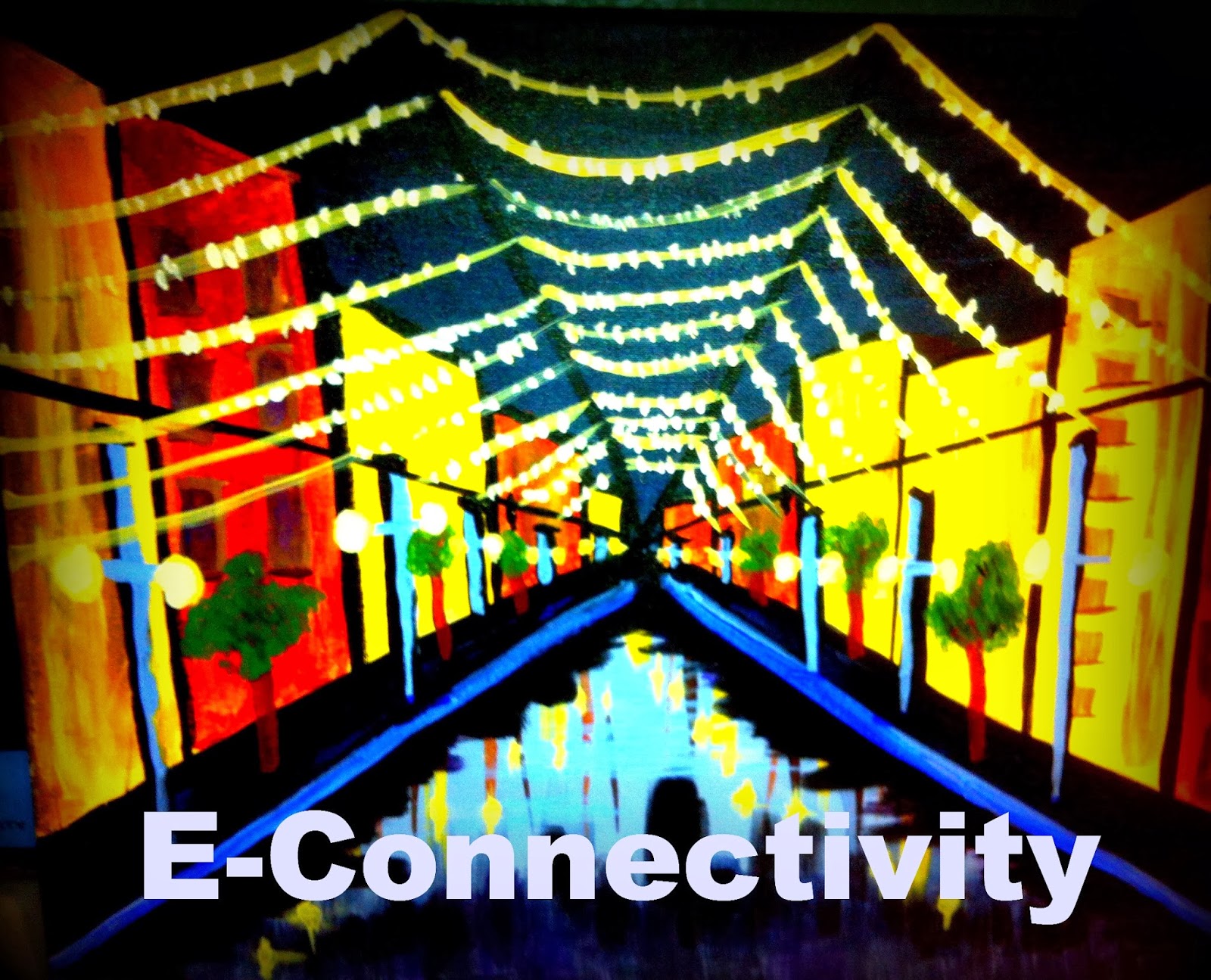By Dr Andree Swanson
 |
| Picture by Dr. Andree Swanson |
Communicating
in the online learning environment is difficult at best. To feel connected to faculty and fellow
students is almost impossible. Interpersonal
exchanges are “more difficult for online students to engage in the kinds of
collaborative peer interactions that often result in the construction of
meaning and achievement of learning goals” (Slagter van Tryon & Bishop,
2012, p. 347). Slagter van Tryon and
Bishop (2006) have been studying the topic of social connectivity as it relates
to student engagement and interaction, and coined the phrase e-connectivity
(e-mmediacy). Swanson, Hutkin, Babb, and
Howell (2010) defined as: “E-mmediacy
or e-connectivity is the feelings
or believing of social connectedness that students and faculty get through the
technologically enhanced online learning environment (Slagter van Tyson,
2007; Slagter van Tyson & Bishop, 2006)” (p. 17).
Before this
current study, there was no validated instruments to measure e-connectivity, so
Slagter van Tryon and Bishop “designed and development the Social Perceptions
in Learning Contexts Instrument (SPLCI)” (p. 348). The two researchers developed a three-step
process to create this instrument. Phase
1 was involved creating an initial instrument based on their extensive
literature review and their previous research on the topic of e-immediacy. Phase 2 incorporated experts to review and
recommend revisions. In this phase, the
researchers tested the reliability and validity of the evolving
instrument. In Phase 3, the final stage
involved more analysis and revision, thus resulting in the final assessment
tool.
Slagter van
Tryon and Bishop and the experts identified three themes that emerged. To overcome e-connectivity or e-mmediacy in a
distance education classroom, one must: 1) increase interactions, 2) provide
“comprehensive technical support”, and, 3) provide persistent follow-up (p.
350). “When students feel e-mmediacy it
appears that valuable cognitive resources that might be wasted on inefficient
social information processing can be allocated, instead, to cognitive
information processing and the learning goals of the course” (Slagter van Tryon
and Bishop, p. 352). Personally, I have
found this to be the case in classes where there is increased interaction in
the online classroom.
After
creating an in-depth instrument, the researchers tried it on a small pilot
study with a sample size of 50.
Although, this was one of the limitations of the study, they concluded
that this study was beneficial and further research should be done. Both Slagter van Tryon and Bishop and Fisher,
Durrance, and Unruh (2003) recommend further research into what enhances the
learning experience for students by increasing e-connectivity in the online
environment.
This study
builds on my own dissertation which revealed the best practices for
e-connectivity in online courses.
In
a review of contemporary literature, research revealed that students believe
they cannot connect with their instructors in online classrooms (Hughes,
Ventura, & Dando, 2007; Stichter, Lewis, Richter, Johnson, & Bradley,
2006). Faculty, administrators,
curriculum designers, and student advisors in institutions that offer online
programs do not adequately address the social and psychological connectivity
needs of students (DeShields, Kara, & Kaynak, 2005). This lack of attention
to the social and affective needs has a negative effect on learner satisfaction
and retention (Bonk, 2002; Melrose & Bergeron, 2006; Moody, 2004; Simpson,
2004; Slagter van Tryon & Bishop, 2006).
Specific guidance on social interaction in the proprietary online
classroom does not exist. Because of the
absence of guidance, training on e-connectivity is lacking for online faculty
and students' satisfaction is decreased leading to a higher attrition rate
(Dow, 2008; Drouin, 2008; Herbert, 2006; Scollins-Mantha, 2008).
By using Bloom's Taxonomy as a
foundation for the overall review, six emerging themes appeared:
Cognitive
} Show relevance to students.
Affective
} Establish e-connectivity.
} Instructor presence.
} Positive communication.
} Ability to be open to social
networking.
Psychomotor
} Use of technologies to e-connect. (Swanson,
2011, p. 1)
As this
compares to Slagter van Tryon and Bishop’s themes, there is a relationship.
Table 1
Comparison of Swanson et al.’s
Themes as Compared to Slagter van Tryon and Bishop’s Themes
Swanson
et al.’s Themes
|
Slagter
van Tryon and Bishop’s Themes
|
Cognitive
} Show relevance to students.
|
|
Affective
} Establish e-connectivity.
} Instructor presence.
} Positive communication.
} Ability to be open to social
networking.
|
Increase
interactions
Provide
persistent follow-up
|
Psychomotor
} Use of technologies to e-connect.
|
Provide
comprehensive technical support
|
Perhaps in
the future, the SPLCI can be used to assess your online classroom. Interested in giving this a try?
References
Fisher, K. E., Durrance, J.C.,
Unruh, K. T. (2003). Information communities: Characteristics gleaned from
studies of three online networks. Proceedings
of the ASSIST Annual Meeting, 40, 298-305.
Slagter van Tryon, P. J., &
Bishop, M. J. (2012). Evaluating social connectedness online: The design and
development of the Social Perceptions in Learning Contexts Instrument. Distance Education, 33(3), 347-364.
Slagter van Tryon, P. J., &
Bishop, M. J. (2006). Identifying “e-mmediacy” strategies for web-based
instruction: A Delphi study. Quarterly
Review of Distance Education, 7(1), 49-63. Retrieved from ProQuest
database.
Swanson, A. C.
(2011, August). Six themes of
e-connectivity in online courses. e-Poster research session, 27th Annual
Distance Learning Conference, Madison, WI. Retrieved from University of
Madison, WI website: http://www.uwex.edu/disted/conference/Resource_library/proceedings/46810_2011.pdf
Swanson, A., Hutkin, R., Babb, D., & Howell, S. (2010,
Sep). Establishing the best practices for
social interaction and e-connectivity in online higher education classes. Doctoral
dissertation, University of Phoenix, Arizona. Publication Number: 3525517.
Retrieved from http://gradworks.umi.com/3525517.pdf
No comments:
Post a Comment